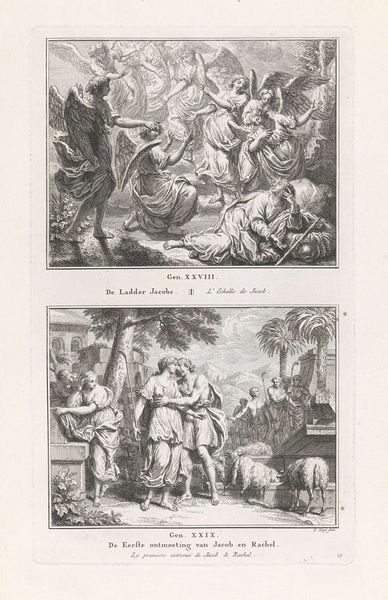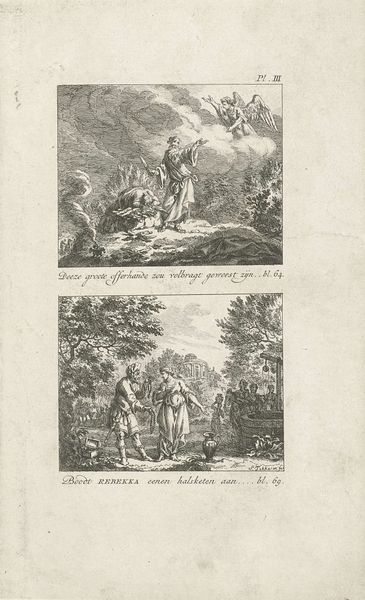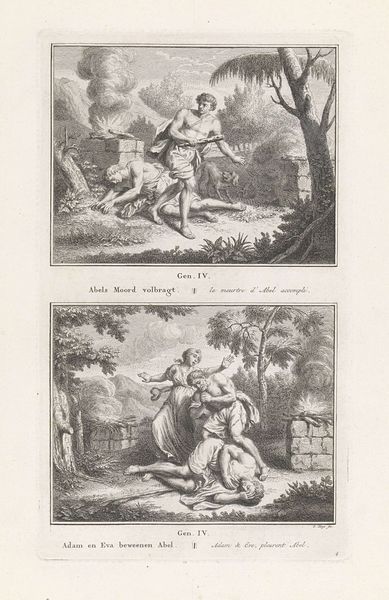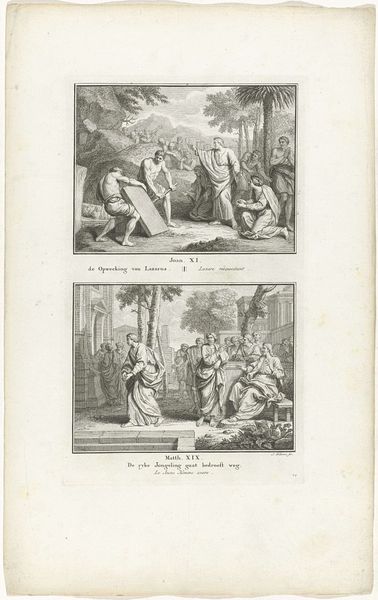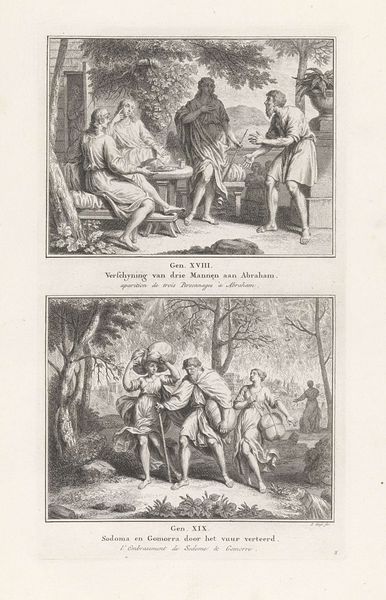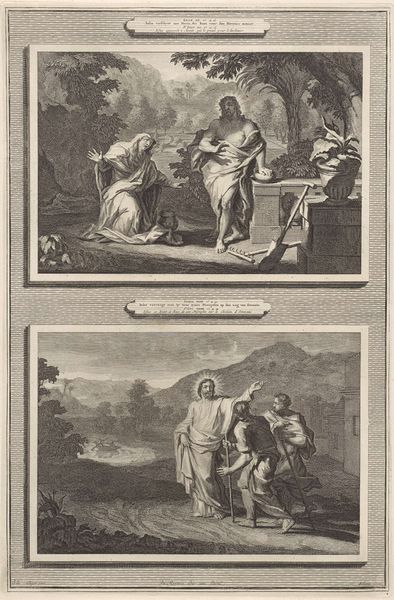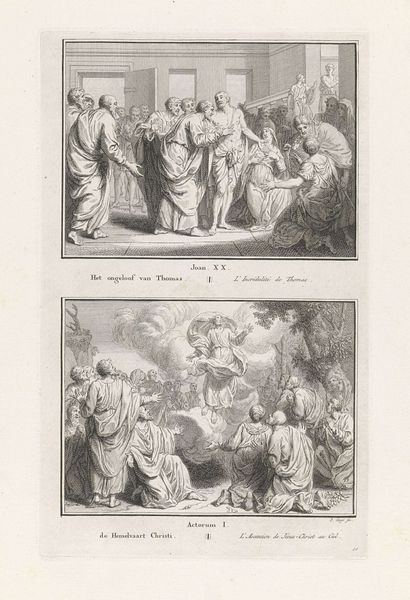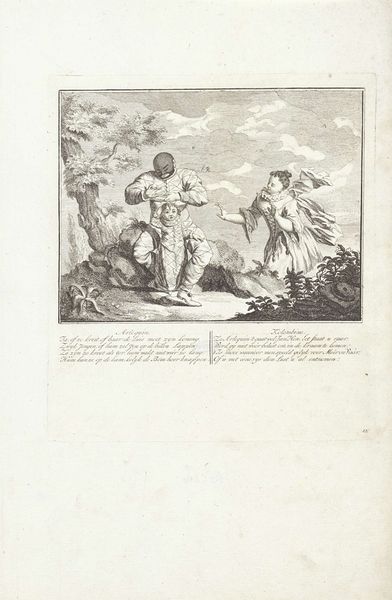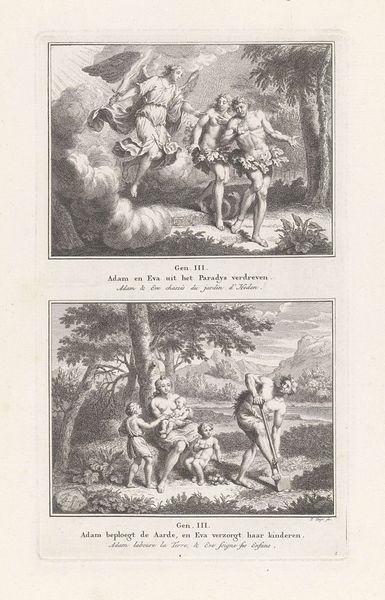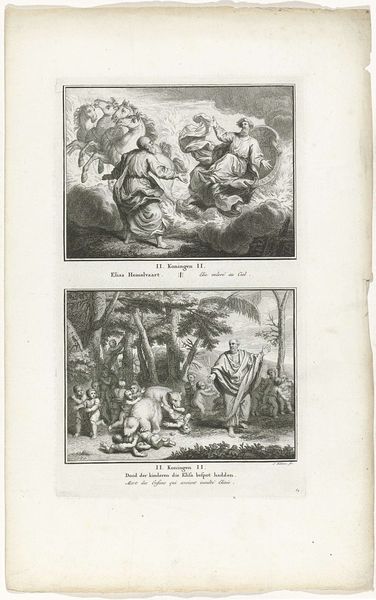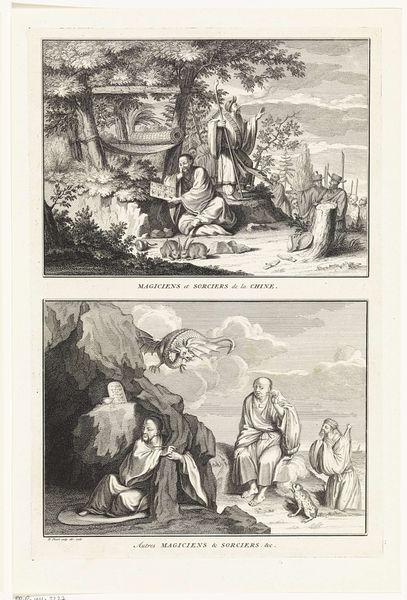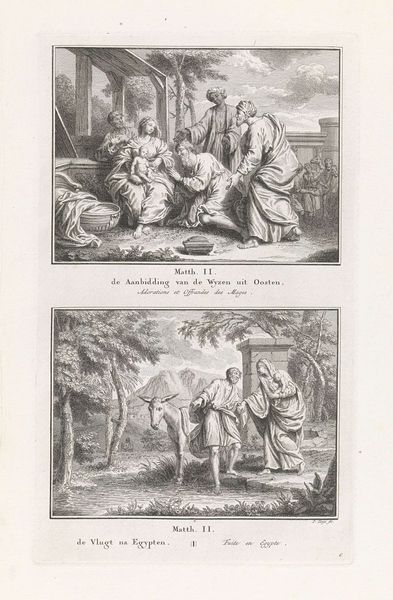
Abraham en Isaak op weg naar de offerplaats / Offer van Isaak 1716 - 1791
0:00
0:00
print, engraving
#
baroque
# print
#
old engraving style
#
history-painting
#
engraving
Dimensions: height 327 mm, width 195 mm
Copyright: Rijks Museum: Open Domain
Editor: Here we have Pieter Tanjé's engraving, "Abraham and Isaac on the Way to the Offering Place/The Sacrifice of Isaac," sometime between 1716 and 1791. It's striking how the artist divides the composition into two distinct moments from the biblical story. What strikes you most about this piece? Curator: What's compelling here is not simply the image, but the means of its production and circulation. Engravings like these democratized religious narratives. The Baroque style, typically associated with grand painting, here finds a humbler, more reproducible form. Consider the engraver's labor: the meticulous carving, the press, and its output geared toward wider consumption. Editor: That's fascinating! So, you're less interested in the religious symbolism and more in the physical creation and its distribution? Curator: Exactly. The biblical story becomes secondary to questions of craft, skill, and the accessibility enabled by this printmaking process. It disrupts traditional notions of 'high' art, inviting us to think about labor, materials, and the social context of its creation. The paper itself, the ink - they all speak to a material history. Editor: I see your point. It makes me consider how the meaning shifts when something so grand is brought down to a reproducible medium. How does its availability change the artwork's purpose? Curator: Precisely! We should also consider who would have purchased this and how they might have used it. Was it framed? Pasted into a book? Used for teaching? Its value wasn't intrinsic but rather defined by how it functioned within a specific social context. Editor: That completely changes how I see this. It's not just a religious scene; it's a product of labor, material, and social use. Curator: And it challenges the typical art historical focus on originality, shifting the attention to the material conditions of art making. Editor: I learned a lot from this approach. I’ll definitely think more about the materials and process from now on.
Comments
No comments
Be the first to comment and join the conversation on the ultimate creative platform.
